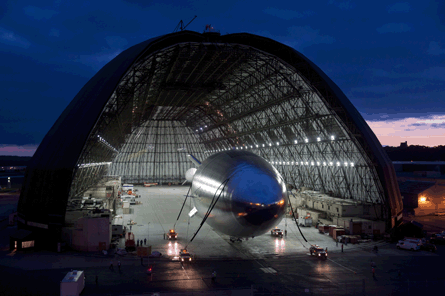Lockheed Martin is investigating why a high-altitude airship was forced to make a controlled landing less than 3h after lifting off on a maiden flight that was supposed to last several days.
The high-altitude long-endurance demonstrator (HALE-D) rose to 32,000ft (9,750m) after lifting off at 05:47 from Akron, Ohio, on 27 July, but then experienced a serious anomaly, Lockheed said.
Helium was escaping from the airship's gas envelope, preventing the demonstrator from ascending to 60,000ft, the company said. The US Army's Space and Missile Defence Command, the project's sponsor, directed Lockheed to land the aircraft as quickly as possible.
 |
|---|
© Lockheed Martin |
Lockheed said more helium was released to bring the airship down, falling a rate of 6.10m/sec (20ft/sec) - or slower than a parachutist. However, the airship landed in a wooded area on top of trees in southwestern Pennsylvania. Local officials were still trying to reach the site of the airship's landing on the evening of 27 July.
Lockheed is waiting for the remnants of the aircraft to be returned before investigating the cause of the original helium leak.
It was not immediately clear how the incident would impact the army's interest in the programme. HALE-D was expected to demonstrate the abilities of a high-altitude airship to function as a communications relay system for several days.
The mission was aborted before the airship could reach a high altitude, and the flight ended less than 3h after it began.
Source: Flight International























